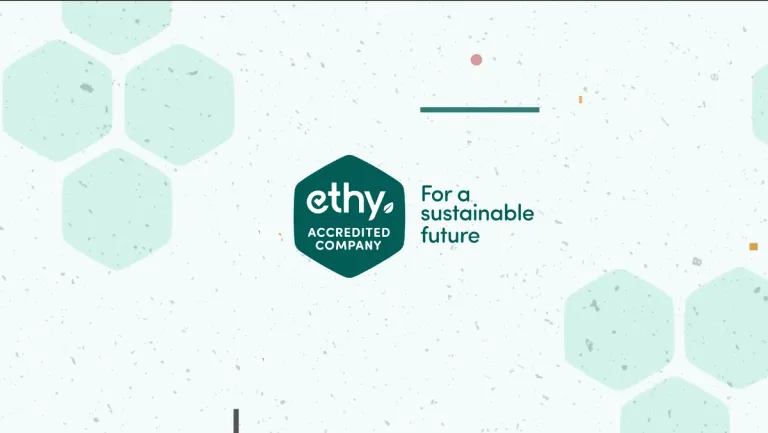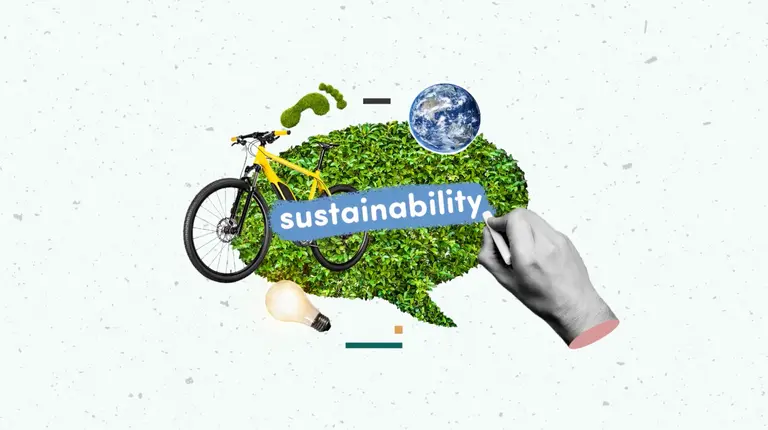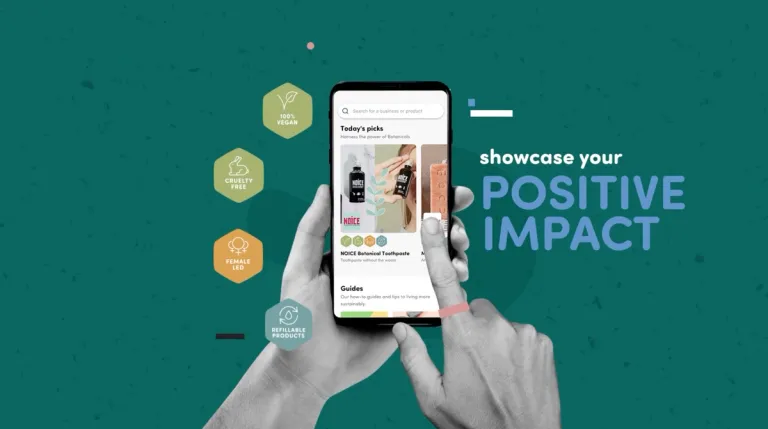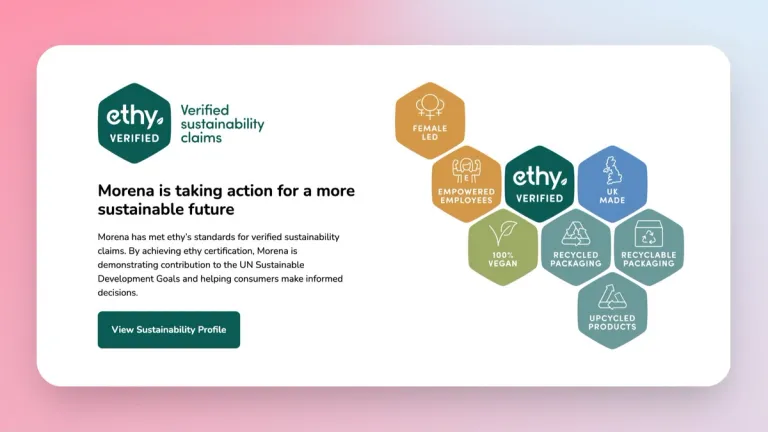
Sustainability Communications & Marketing
Free Green Claims Audit for Your Website
Our team reviews your claims against the Green Claims Code to help you communicate responsibly and confidently.

Sustainability Communications & Marketing
Why have a sustainability report?
Eight reasons your business needs a sustainability report (no matter how small it is)

Sustainability Communications & Marketing
The Art of Effective Sustainability Communications for Businesses
This article explores how transparent and compelling messaging can boost trust and loyalty. We'll cover key principles, engaging diverse audiences, and real-world examples.

Sustainability Communications & Marketing
Ecolabel Integration Guide
Your website is a great starting point for showcasing your awarded ecolabels, but there's many other areas to consider using them. Explore examples and guidance on using your ecolabels across various marketing channels in the article below.

Downloadable Guides
Sustainability Marketing: Your Guide to Navigating the Green Claims Code
Your guide to navigating the complexity of the UK's consumer protection law on environmental claims: The Green Claims Code

ethy Verification
How to use your ethy verified mark
ethy verified brands can demonstrate their commitment for a more sustainable future using ethy accreditation mark. Only companies that have successfully passed ethy's accreditation assessment are permitted to use the accreditation mark.
It is important that the accreditation mark is used in accordance with ethy Trademark Usage Guidelines.
Please download ethy Brand and Trademark Usage Guidelines from here.
These guidelines explain how you can and must use and visually present our brand assets at all times. Your use of our brand assets indicates your acceptance of these guidelines, and you understand that your use of our brand assets in violation of these guidelines will result in the automatic termination of your license and/or affiliate partner status and/or permission to use our brand assets.
Use of our brand assets must be expressly authorised in writing.
Your use must not mislead consumers as to our sponsorship of, affiliation with or endorsement of your company or your products or services.
Our brand assets are our exclusive property. All goodwill that results from your use of our brand assets will be solely for our benefit. You will not take any action that is at odds with our rights or ownership of our brand assets. Where used on a web page, our brand assets, as well as the mention of our name, should include embedded hyperlinks to our homepage: www.ethy.co.uk or to your brand profile page on ethy website.
Our brand assets must be used in a respectful manner. Our brand assets may not be used in a way that harms us, our products or services, or in a manner which, in our opinion, lessens or otherwise damages our reputation or the goodwill in our brand assets. In other words, please do not associate our brand assets with any illicit or illegal activities or use them in a way that is deceptive or harmful.
If you’re feeling unsure about the proper use of our logo or other assets, it’s always good to ask! Send us an email at marketing@ethy.co.uk
Using ethy Brand Assets
If you are a customer please sign in to your dashboard to access your brand-specific accreditation marks and certification.
By using our brand assets, you indicate your acceptance of our Brand and Trademark Usage Guidelines, and understand that violating these guidelines will result in the termination of your permission to use our brand assets.

Sustainability Communications & Marketing
Introducing ethy's Embeddable Widgets
The easiest way to showcase your sustainability story on your website

Sustainability Communications & Marketing
How to communicate sustainability
So your company has been making great strides to improve its environmental and social performance. But how do you go about letting the world know about it?
Communicating your company’s positive impact can be fraught with obstacles. Not to mention that only 20% of shoppers trust brand sustainability claims according to a report by Compare Ethics.
Greenwashing has certainly taken its toll on consumer trust, but how can companies with genuine intentions mitigate allegations of greenwashing and communicate their green credentials effectively?
After all, well-crafted communications can unlock huge benefits and transform sustainability into a competitive advantage.
It starts with transparency
Greenwashing simply can't thrive in an atmosphere that embraces transparency. When the marketing of sustainable products or services is open and explicit, it prevents exaggeration and provides evidence.
Companies hoping to garner trust should also own up to their pitfalls (not just triumphs), which can go a long way in gaining the respect of today’s shoppers.
So how do you go about being transparent? Third party accreditation is a good place to start. According to Compare Ethics, 83% of shoppers would be more likely to trust a product’s sustainability claim if it had been verified by a third party.
Our own ethy accreditation process provides expert assurance that a company has met a set of robust criteria through evidence-led assessment.
Keep it simple
Sustainability is a huge and complex topic, which can overwhelm people unless you keep things simple. While it may be tempting to include every possible piece of information around your sustainability endeavours, the everything-no-filter approach rarely leads to effective reporting. Focus on the metrics that are most important to your company and target audience.
A picture paints a thousand words, and so we developed a way to communicate company-wide sustainability in just that - one picture. We call it the Impact Hive:
Made up of proof-earned trust marks, the Impact Hive provides an overview of your company’s sustainability story in a consumer-friendly format.
Make it positive
The climate crisis is depressing enough without constant reminders of the doom and gloom scenario. Positive messages can make sustainability-related behaviours feel more accessible and less scary. Through uplifting messaging and imagery, companies can inspire collective action and install a sense of empowerment.
At ethy, this is something we’ve carried through within our own brand DNA and embrace within our own communications around sustainability. Even something as trivial as our choice of colours play a role here!
Understand your audience
Audiences for sustainability communications are becoming increasingly diverse, as the wider public is taking a greater interest into sustainability. These varied stakeholders want different things from sustainability communications. While some might be focused on societal impact, others may be more concerned with the environment and preservation of nature.
You’ll need to identify what each of your stakeholders want and how best to tailor your sustainability communications to meet their specific needs.
Don’t be afraid to get help
To reiterate, effective sustainability communications is a no easy feat. Consumer trust is at an all time low while brand loyalty has never been more important.
This is where we come in! It’s time to proof-back your environmental and social efforts through ethy and use our pioneering communication solutions to spread the word in a credible way.
Click here to speak to us today.

ethy Verification
How to use your ethy trust marks
Derived from the United Nations Sustainable Development Goals and developed with experts, ethy's trust marks help consumers understand your company's sustainability achievements. Awarded through proof-backed assessment, trust marks ensure claims are accurate and explicit.
Only companies that have successfully passed ethy's accreditation assessment are permitted to use trust marks. Trust marks should be used to demonstrate specific environmental or social impacts relevant to the company.
Trust marks should not be combined with any other assets and should be applied to be as visible as possible. In no circumstances are trust marks permitted to be hand drawn, re-created by any other organisation or person or incorporated into another organisation’s artwork.
It is important that trust marks are used in accordance with ethy's Brand and Trademark Usage Guidelines.
Please download the full ethy Brand and Trademark Usage Guidelines from here.

ethy Verification
How to use your ethy Impact Hive
ethy verified brands are provided with a brand-specific Impact Hive (sustainability profile) to illustrate brand-wide sustainability achievements. Impact Hive is comprised of individual ecolabels, used collectively, like a beehive.
Derived from the United Nations Sustainable Development Goals and developed with experts, ethy's ecolabels help consumers understand your brand's sustainability achievements. Awarded through proof-backed assessment, ecolabels ensure claims are accurate and explicit.
The Impact Hive represents brand-level sustainability achievements and is not meant to be used to represent a particular product or service. The Impact Hive should not be combined with any other assets and should be applied to be as visible as possible.
The simplest and fastest way to use your Impact Hive is by embedding ethy widgets into your website. ethy verified customers can find instructions and design options in their ethy dashboard under the Communications Toolkit tab.
In no circumstances should the Impact Hive be hand drawn, re-created by any other organisation or person or incorporated into another organisation’s artwork. Usage of the Impact Hive should comply with our guidelines.
For full Impact Hive usage guidelines, please click here.